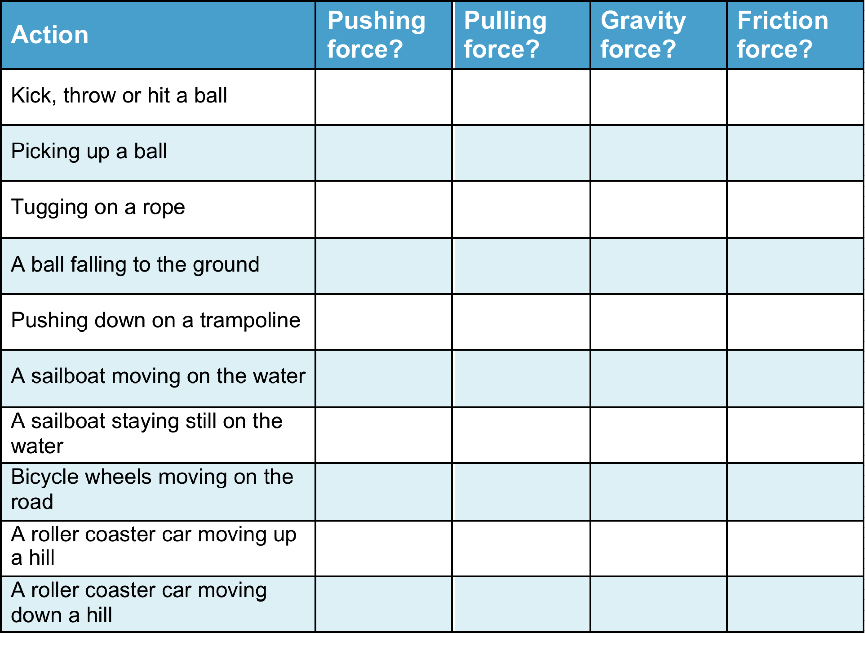Information for Teachers
Curriculum links
Australian Science Standards
PS (ACSSU76) Forces can be exerted by one object on another
PS (ACSSU76) Effect of friction on different surfaces
PS (ACSSU76) Effect of forces on the behaviour of an object
New Zealand Science Achievement Objectives
PW: The patterns associated with physical phenomena found in everyday situations involving movement, forces, electricity and magnetism, light, sound, waves and heat
PW: The effect of forces (contact and non-contact) on the motion of objects
Helpful websites
You may want to direct your students to some or all of these websites to help with their investigations.
http://www.physics4kids.com/files/motion_laws.html
https://science.howstuffworks.com/engineering/structural/roller-coaster4.htm
How to search the internet
1 Keep your request short
Fewer words will give a more accurate search.
2 Choose exactly what you want
For example: Arctic Circle Climate
3 Use quotes
Double quotes around a set of words tell the search engine to consider those exact words in that exact order without any change. For example: “Arctic Circle Climate”
4 Use the plus sign (+)
If you add a plus sign (+) between words, the internet will search for all the words. For example: migrate+birds+whales+mammal
5 Use the minus sign (–) to say what you don’t want
Use a minus sign (–) to show words you do not want to appear in your results. For example: if you search for burrowing animals and do not want mammals in your search, –mammals will exclude mammals. Note that you need to put a space before the minus sign for the word to be excluded.
6 Be very clear about what you don’t want
Part 1
Ask questions and make predictions
After reading Everything Moves, you may have many questions about the different ways things move and what causes them to move.
List your questions
• Compare your list with questions that others have.
• Choose a question you would like to investigate.
• You can work alone, with a partner, or in a small group.
You may want to choose one or more of these questions to investigate
Q1. What causes things to move?
Q2. What are the different types of motion?
Q3. What forces slow things down or make them change direction?
Go to Part 2 Plan and investigate →Part 2
Plan and investigate
Do searches in the internet or in books or talk to people who can help to find the information you are looking for.
Your teacher may suggest suitable websites for further information.
Go to Part 3 Record and analyse data →
Part 3
Record and analyse data
Find a way of recording your information that will allow you to see any patterns in the data.
Data Chart for Everything Moves
Decide which force happens in these activities.
(Download and change to suit your information)
 Download Chart
Download Chart
Go to Part 4 Evaluate the information →
Part 4
Evaluate the information
1. Look over the information you have gathered and the patterns you have found.
What causes things to move?
What are the different types of motion?
What forces slow things down or make them change direction?
2. Search for other patterns.
How does friction work?
How does gravity work?
Why do pushing and pulling forces need to overcome gravity and friction?
3. Makes notes about what you find.
Go to Part 5 Communicate and share ideas →Part 5
Communicate and share ideas
Look over all of the information that you have gathered in your investigation.
What are the most important ideas about the ways things move in different ways, slow down or stop?
Make a chart showing the most important ideas.
Share your findings with another person/a small group/the class.
 Download Chart
Download Chart
← Return to menu
